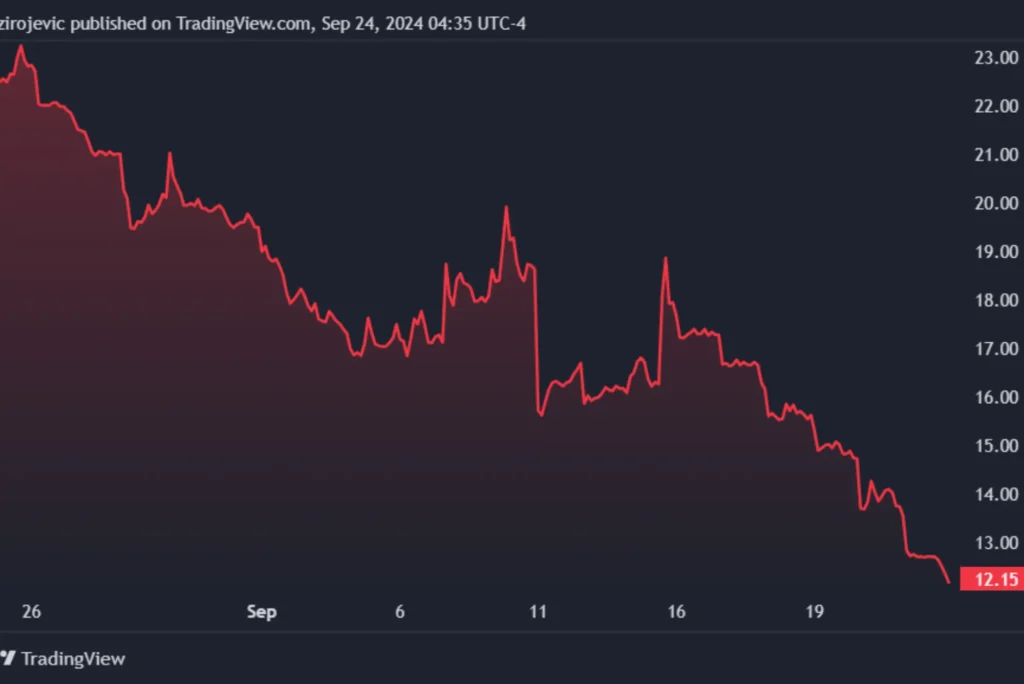The DJT Price Chart serves as an essential tool for traders, investors, and financial analysts. Understanding its dynamics allows individuals to make informed decisions about market trends and trading strategies. In this article, we delve into the DJT Price Chart, exploring its historical trends, contributing factors, and the importance of monitoring it in today’s financial landscape.
What is the DJT Price Chart?
The DJT Price Chart refers to a graphical representation of the price movements of an asset or index over a specific time frame. Commonly, this chart is associated with the Dow Jones Transportation Average, a stock market index tracking the performance of prominent companies in the transportation sector. The chart highlights price fluctuations, revealing patterns that indicate market sentiment and potential investment opportunities.
The Historical Significance of DJT

The Dow Jones Transportation Average is the oldest U.S. stock index, dating back to its inception. Initially composed of transportation-related companies such as railroads, it now encompasses airlines, shipping firms, trucking companies, and logistics providers. Over the years, the DJT Price Chart has acted as a barometer for economic health, reflecting the state of goods transportation, a critical component of economic activity.
Key Milestones in DJT History
The index has evolved significantly since its creation. From focusing on railroad companies to including airlines and global logistics firms, its composition mirrors the transformations in the transportation sector. Each shift in its components signifies broader economic and industrial trends.
Understanding DJT Price Movements
Analyzing the DJT Price Chart involves recognizing patterns, trends, and price levels that indicate market dynamics. Key elements to consider include:
Trends
Trends in the DJT Price Chart can be upward, downward, or sideways. These trends often align with broader economic indicators such as growth in the economy, changes in energy costs, and shifts in consumer behavior.
Support and Resistance Levels
Support levels represent price points where demand tends to prevent further declines. Conversely, resistance levels indicate where supply suppresses price increases. Identifying these levels aids in predicting price reversals or breakouts.
Volume Analysis
Volume measures the number of shares traded during a specific period. High volume during price changes often confirms the strength of a trend, making it a critical aspect of the chart.
Candlestick Patterns
Candlestick charts provide detailed insights into market sentiment. Patterns such as dojis, engulfing candles, and hammer formations reveal potential reversals or continuations in price movement.
Factors Influencing DJT Price Trends
Numerous factors contribute to the trends observed in the DJT Price Chart. These include:
Economic Conditions

Economic indicators such as growth rates, employment statistics, and spending patterns directly impact transportation demand. Positive economic growth often correlates with rising prices on the chart.
Oil Prices
Transportation companies rely heavily on fuel. Fluctuations in oil prices significantly affect their profitability, influencing trends displayed on the chart.
Technological Advancements
Innovations in transportation technology, such as autonomous vehicles and electric trucks, can drive investor optimism. These advancements often lead to upward movements in the chart.
Global Trade Policies
Trade agreements, tariffs, and geopolitical tensions can impact the flow of goods across borders. Such changes are promptly reflected in the price chart.
Practical Applications of the DJT Price Chart
For investors and analysts, the DJT Price Chart serves as a valuable resource. Key applications include:
Market Forecasting
Studying historical patterns helps forecast future movements. A consistent uptrend in the chart may suggest a healthy economy and potential investment opportunities.
Risk Management
Identifying support and resistance levels aids in setting stop-loss and take-profit orders, minimizing risks.
Sector Analysis
The performance of the transportation sector provides insights into broader economic trends. This helps investors diversify their portfolios effectively.
Technical Trading
Technical analysts rely on the chart to identify entry and exit points based on patterns, volume, and price levels.
Tools for Analyzing the DJT Price Chart
Numerous platforms and tools are available for analyzing the chart, including:
Online Trading Platforms
Platforms like MetaTrader, TradingView, and E*TRADE offer comprehensive tools for chart analysis, allowing users to customize their views.
Technical Indicators
Indicators such as Moving Averages, Relative Strength Index, and Bollinger Bands provide additional layers of analysis.
Market News Feeds
Staying updated with real-time news ensures you interpret the chart accurately, correlating it with current events.
Challenges in Using the DJT Price Chart
Despite its utility, analyzing the chart comes with challenges:
Market Volatility: Sudden price swings can make it difficult to identify clear trends. Data Overload: Excessive reliance on technical indicators may complicate analysis. Economic Uncertainty: External shocks, such as pandemics or wars, can disrupt traditional patterns on the chart.
The DJT Price Chart is more than just a representation of price movements; it is a window into the health of the transportation sector and, by extension, the global economy. By understanding its trends, analyzing contributing factors, and leveraging the right tools, traders and investors can harness its insights to make informed decisions. Whether you are a novice or an experienced market participant, mastering the chart is a step toward achieving your financial goals.






